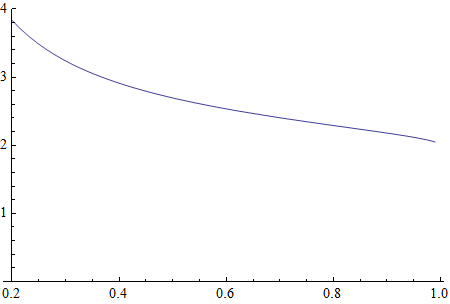I don't see any plots. Here's what I get for the ratio C(FullWave)/C(HalfWave) for K ranging from 0.2 to 0.95:

Hello Electrician,
That's because there arent any plots there
Getting late over here
Ok, here's the plot, but the plot of the wRC constant might be more interesting. Since w, R, and C all enter the formula as a factor w*R*C we can plot that which allows us to calculate the value of C based on any line frequency or load resistance. From this plot all we need to do is divide by w and divide by R to get the right cap value. But let's see if i can remember to post the plots with it this time
I'm posting the wRC plot first, and in the ratio plot ignore the red plot. Our ratio plots match up.



